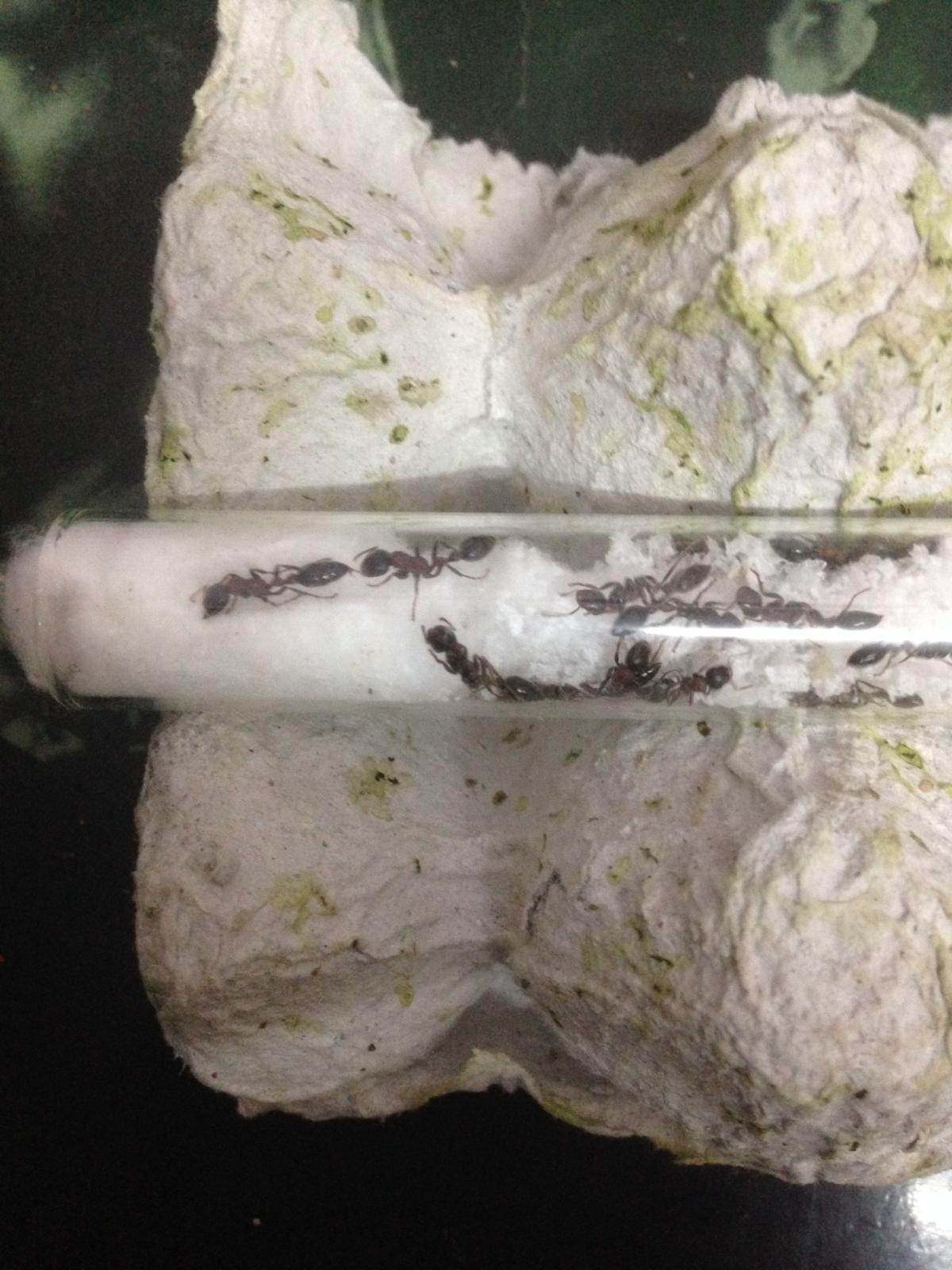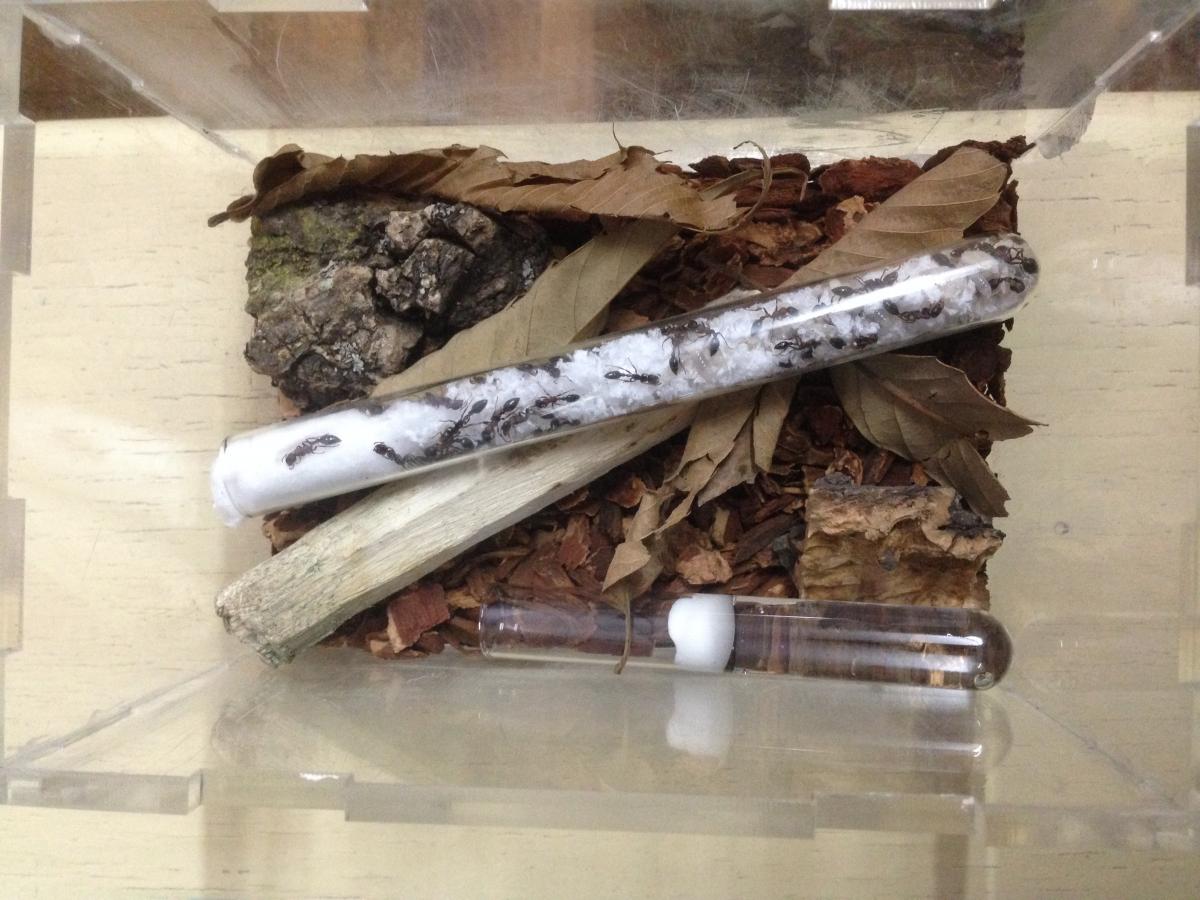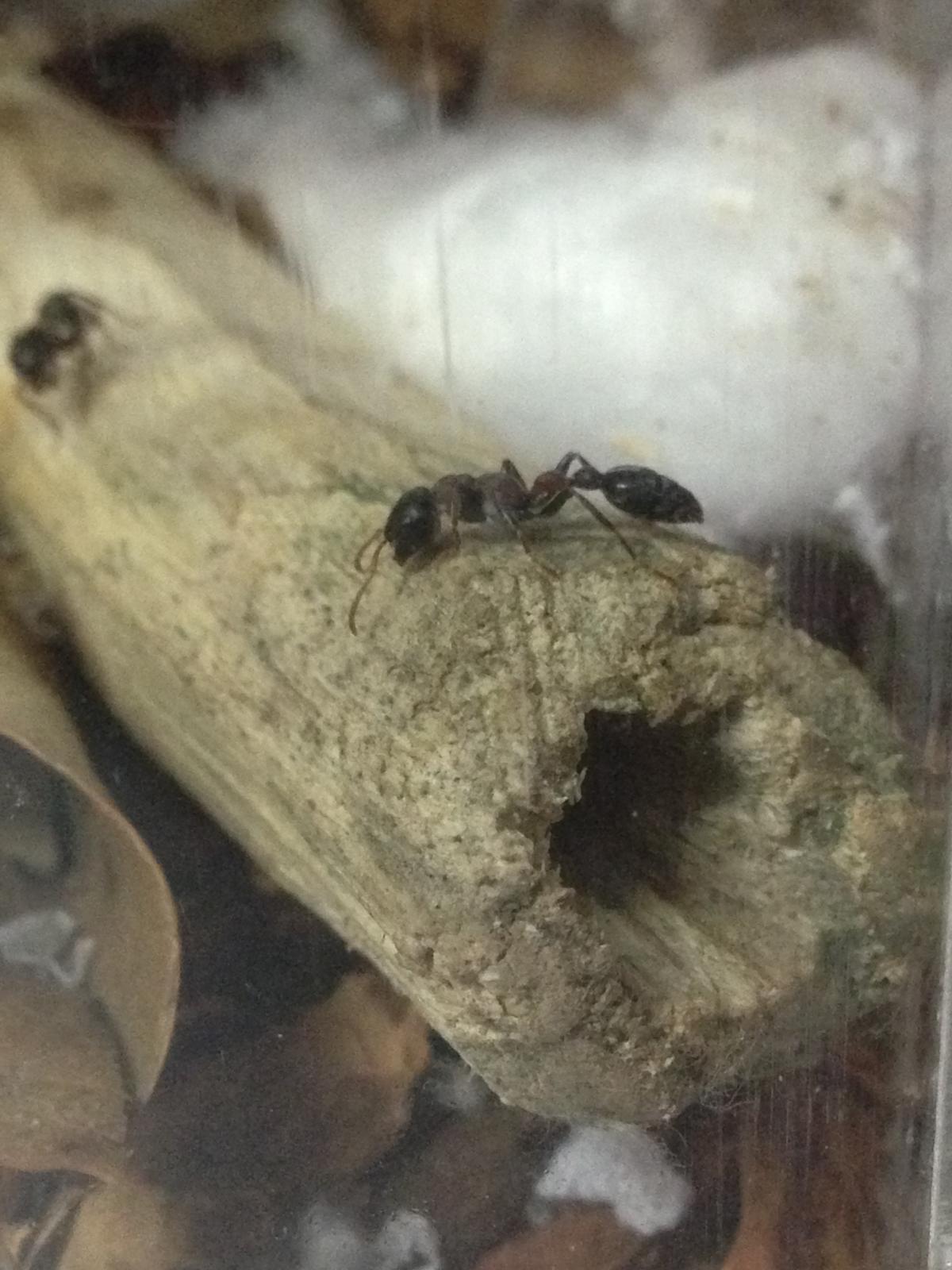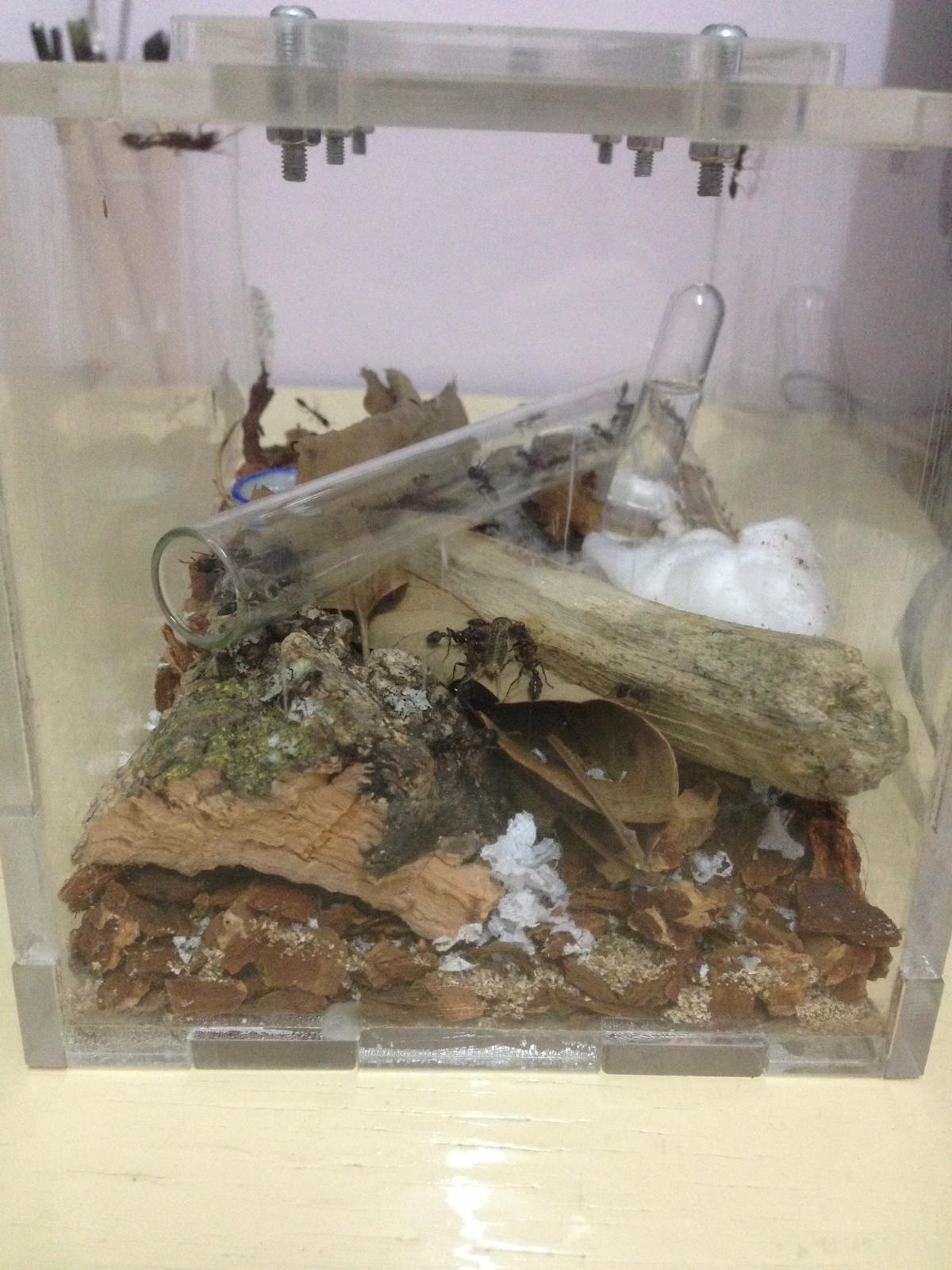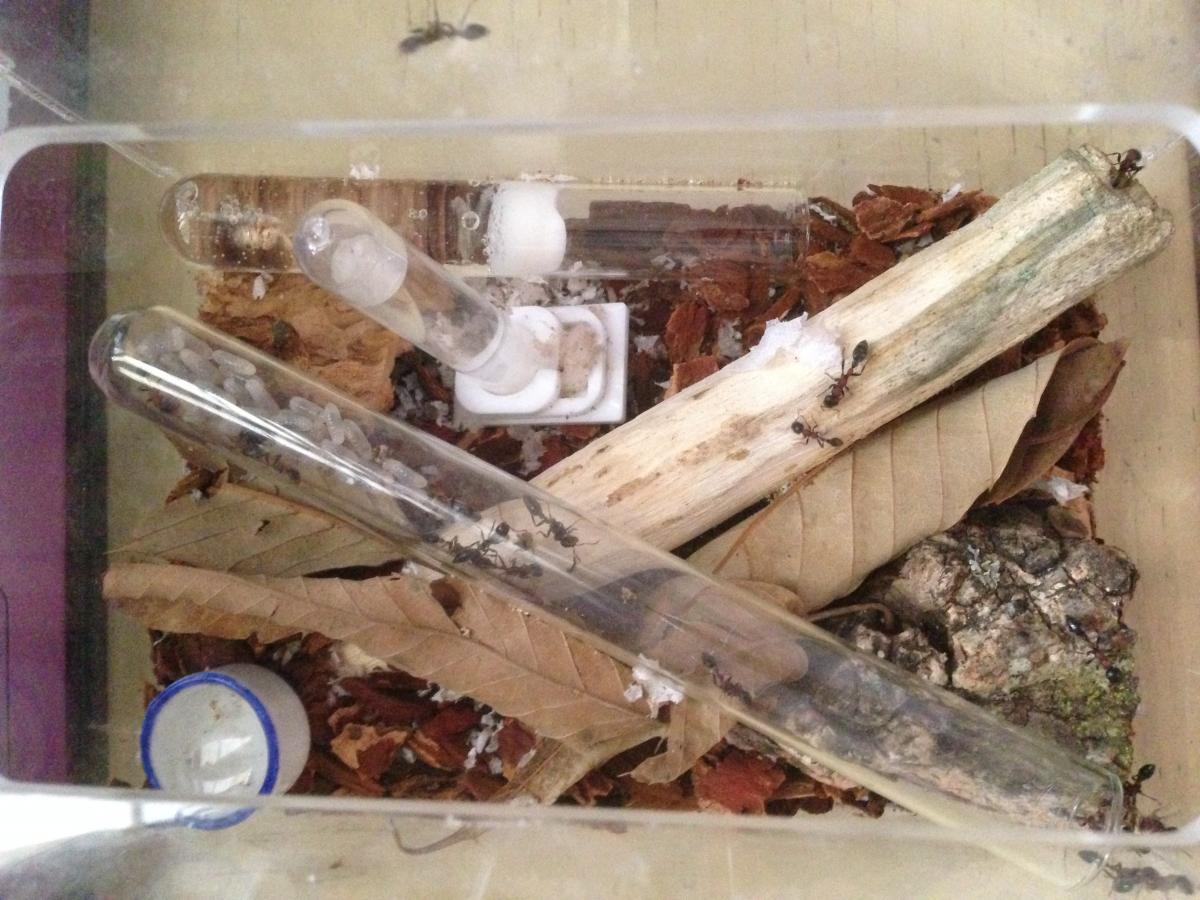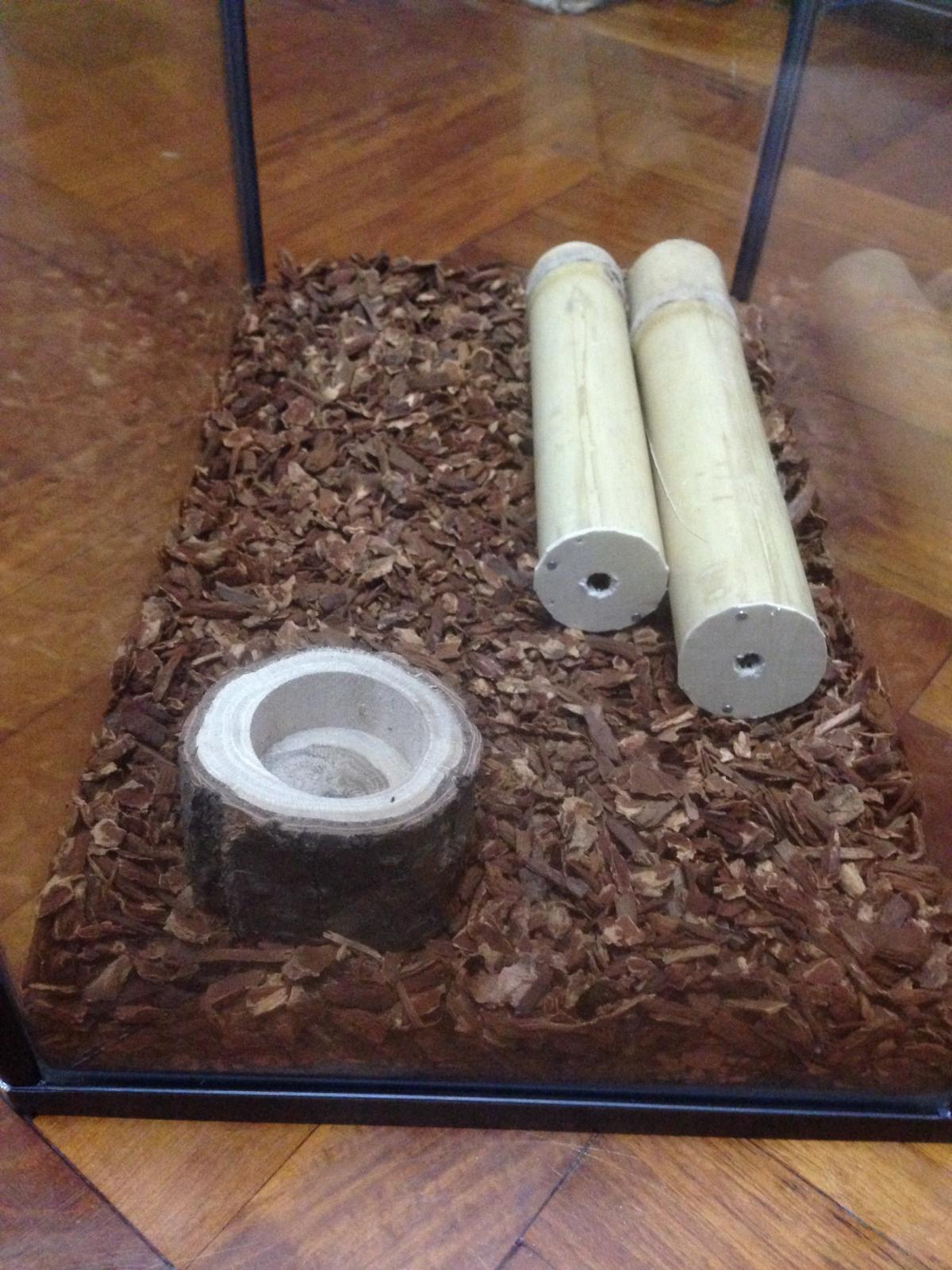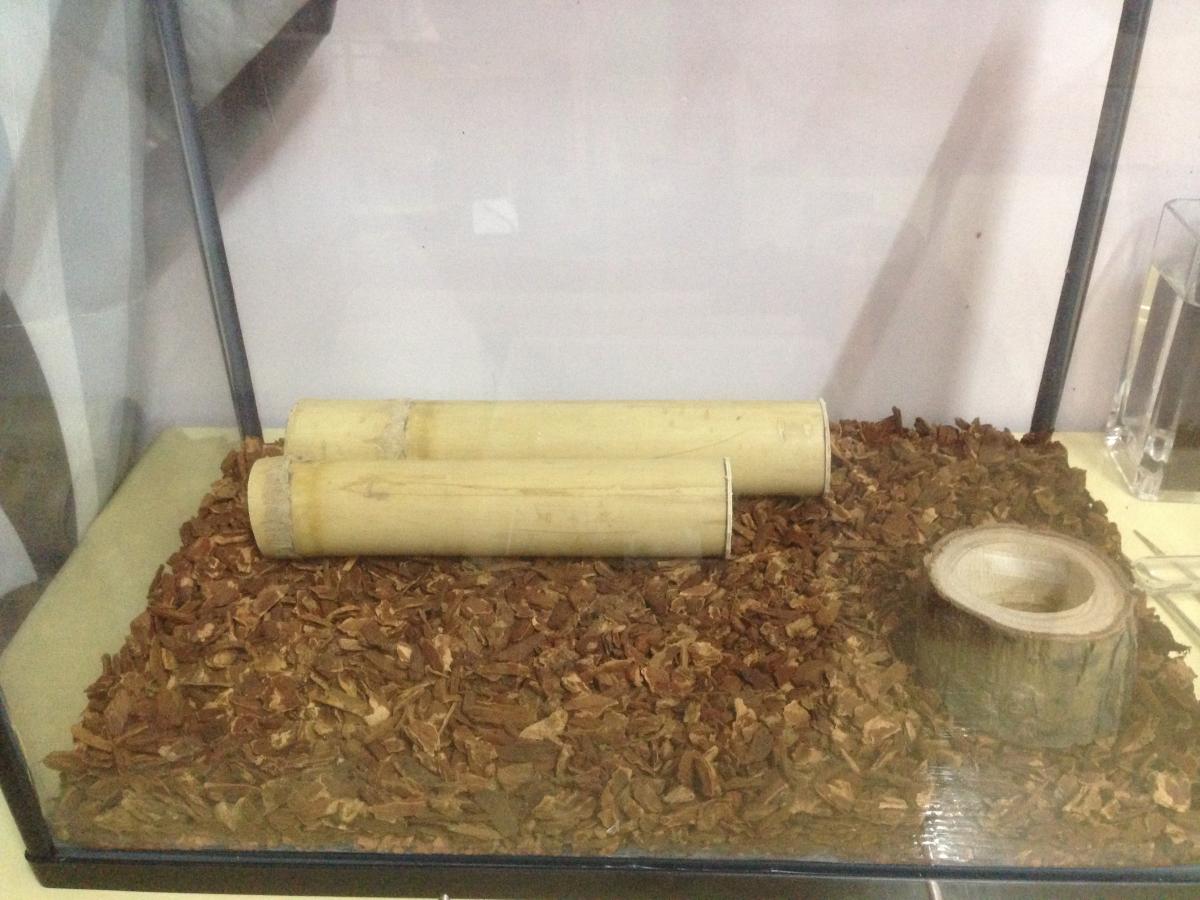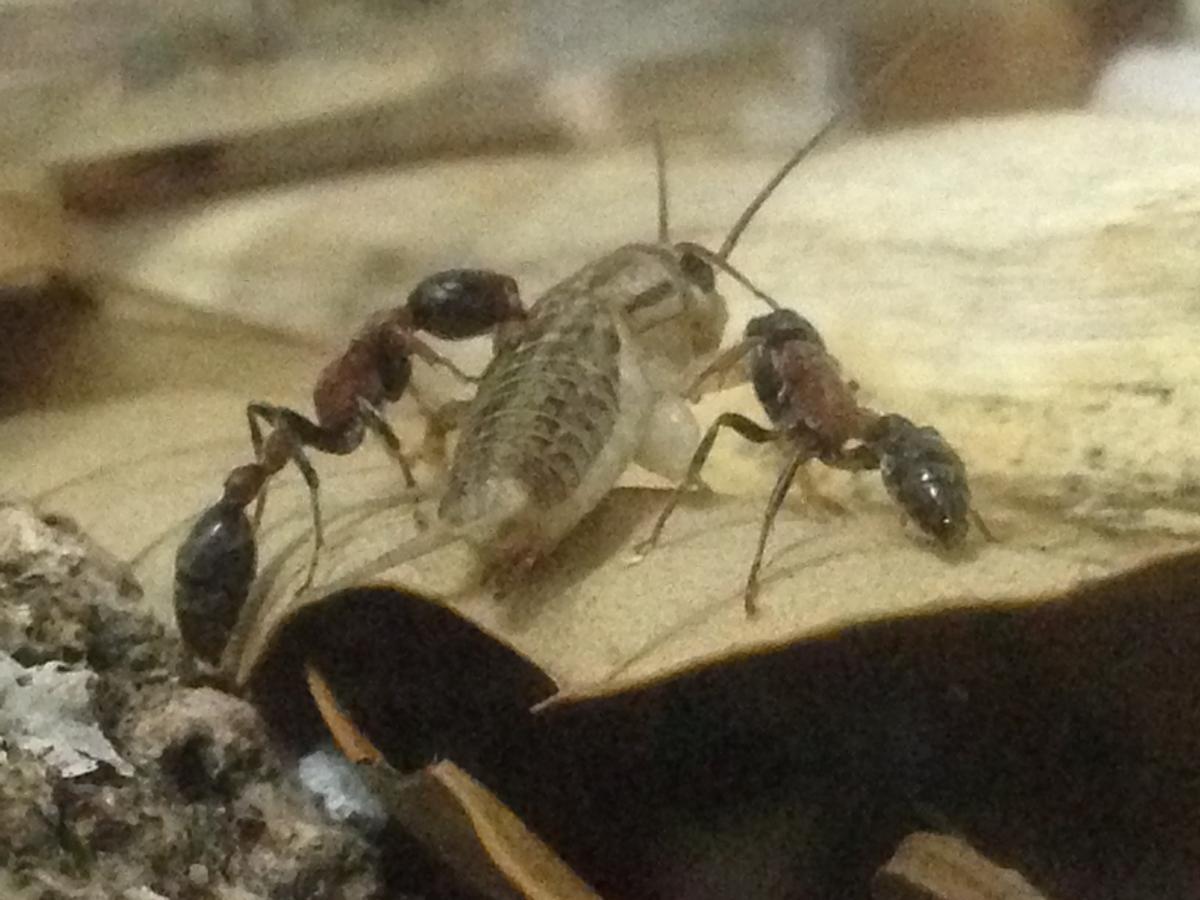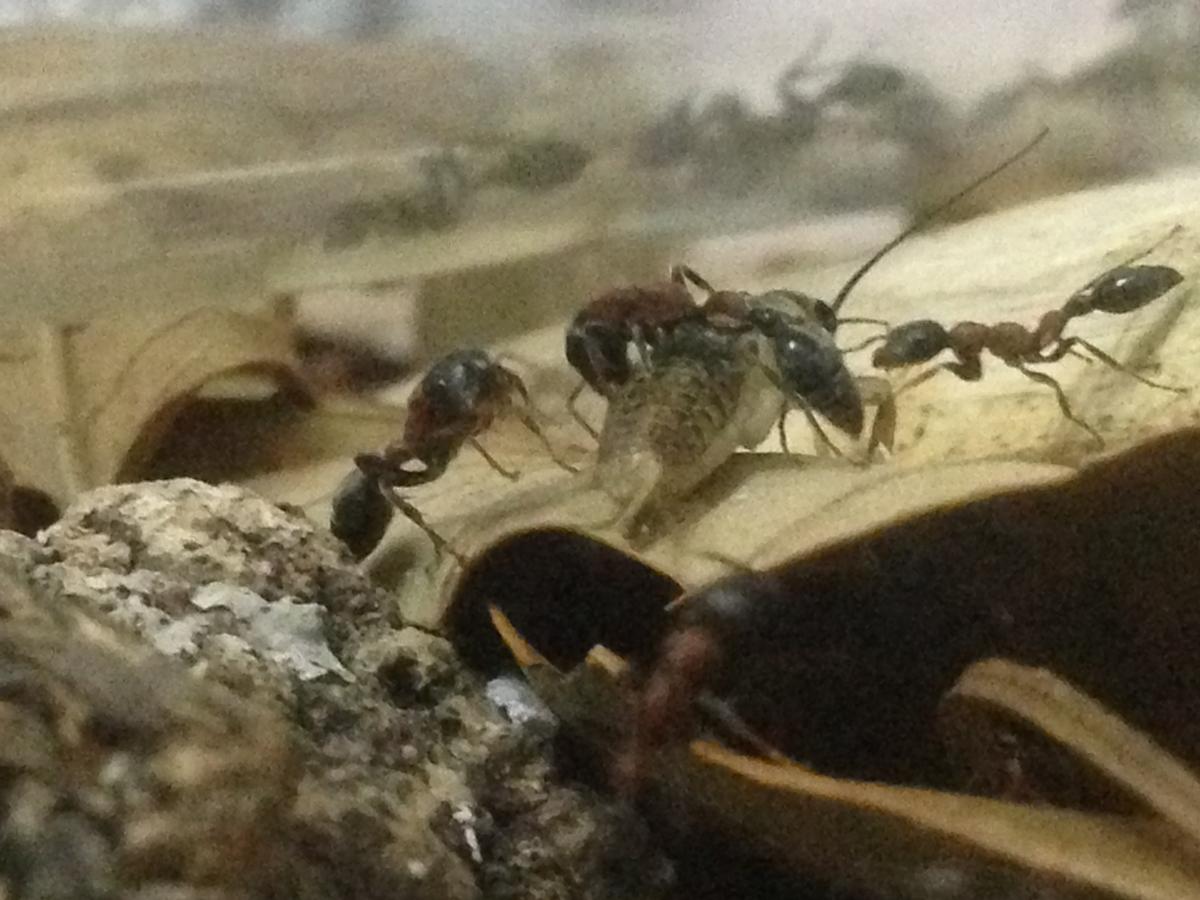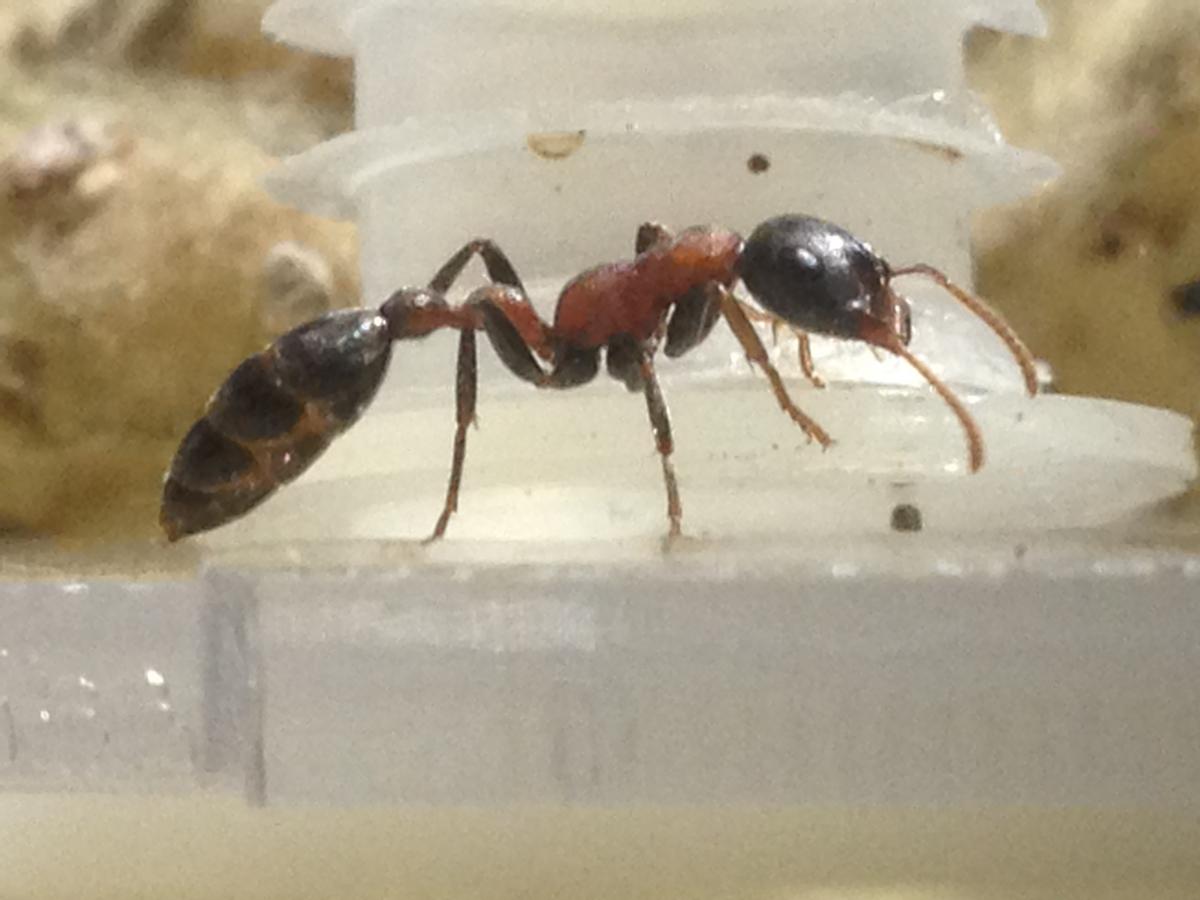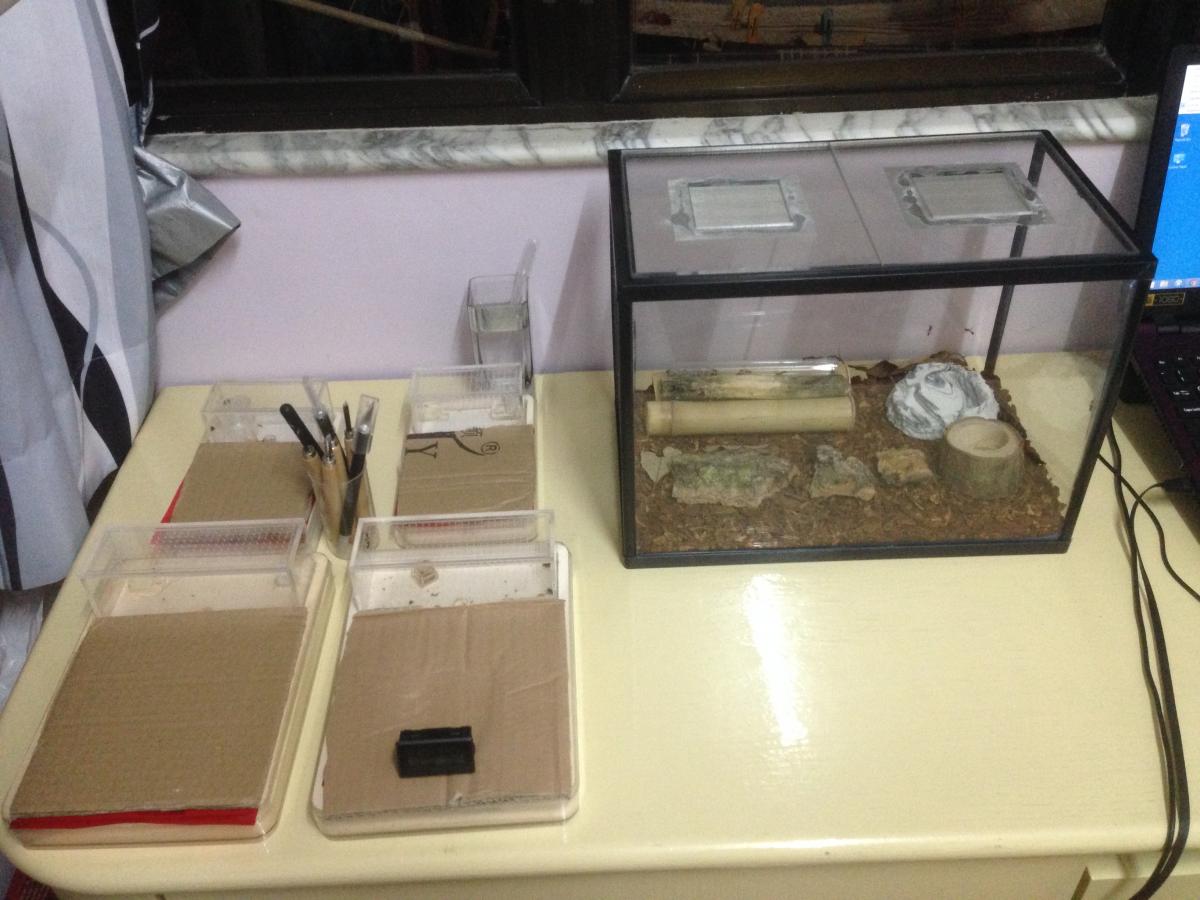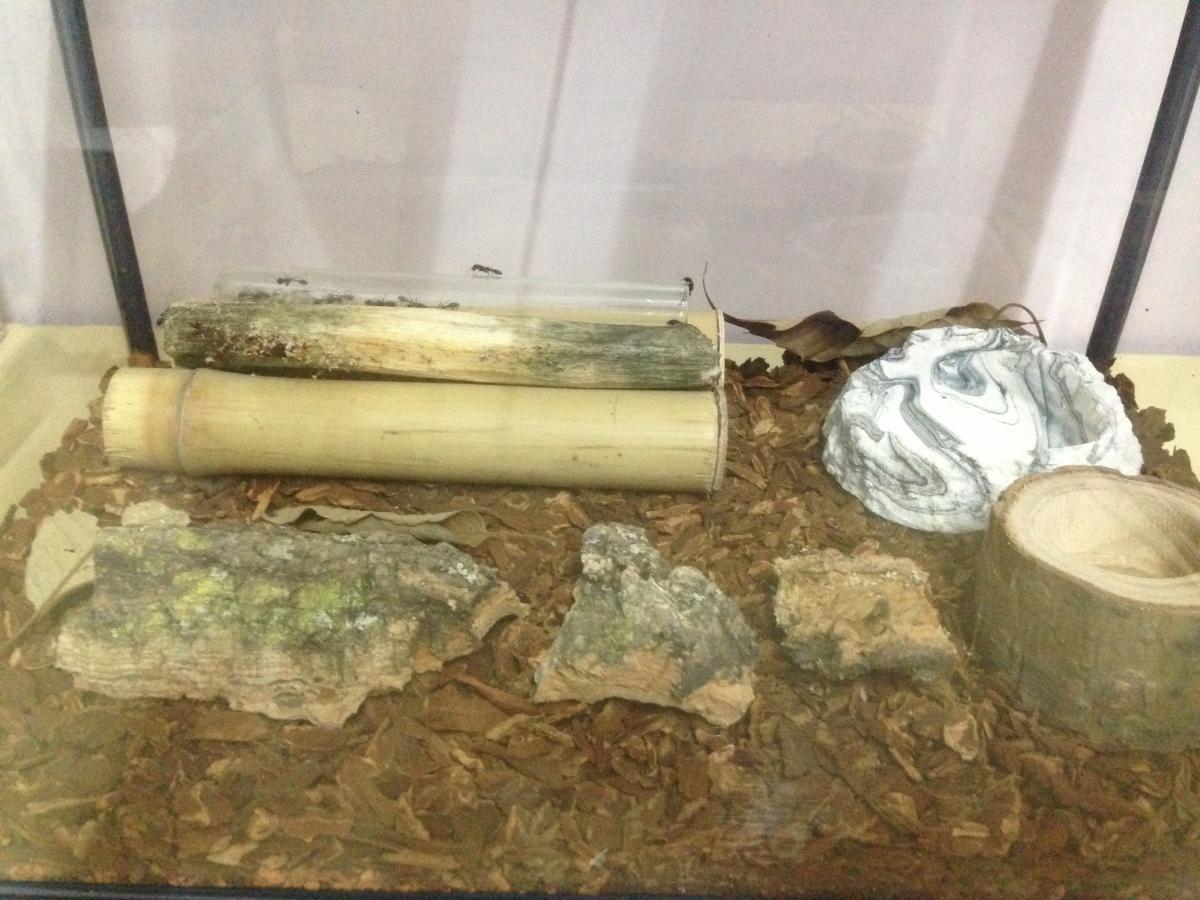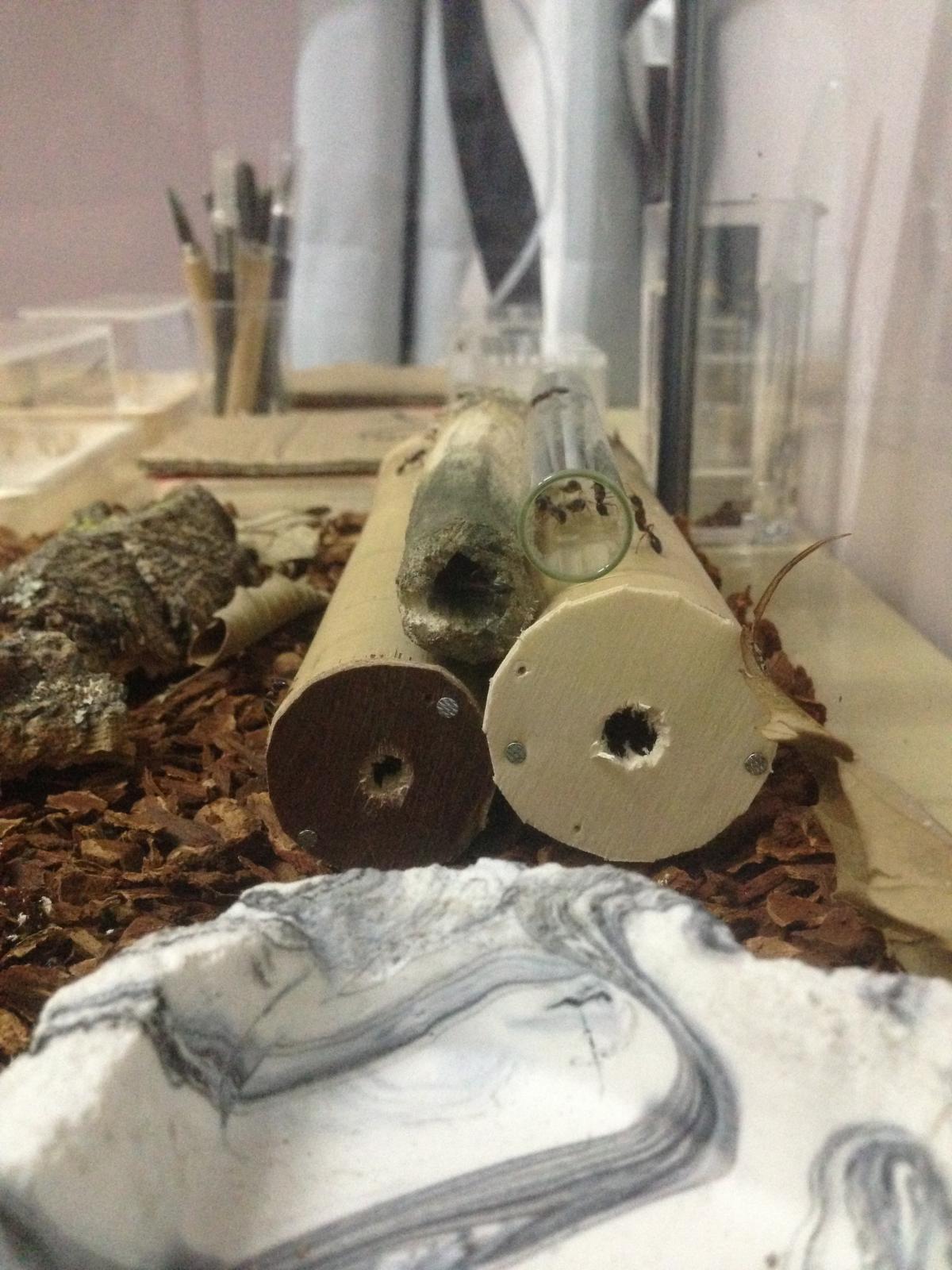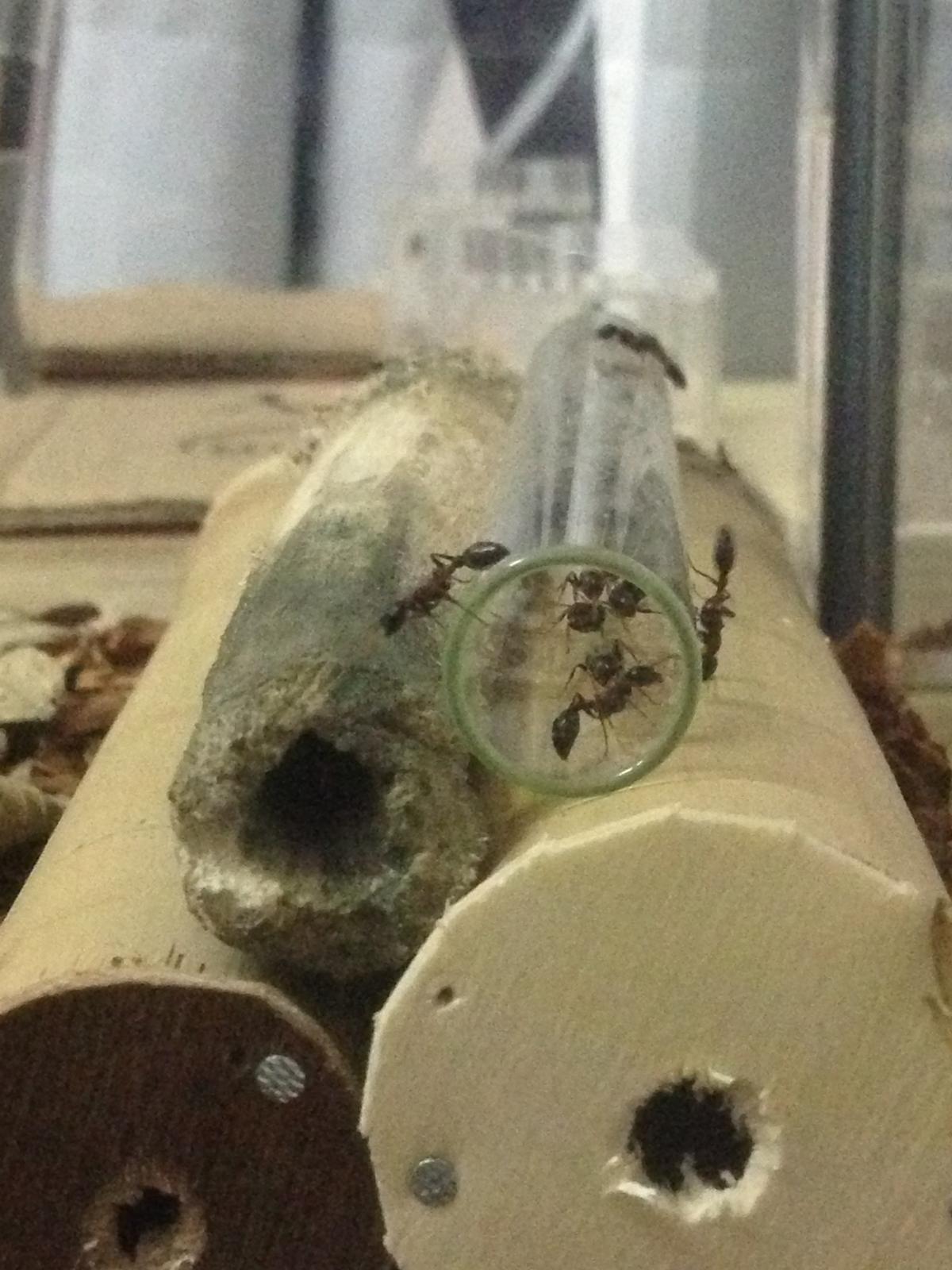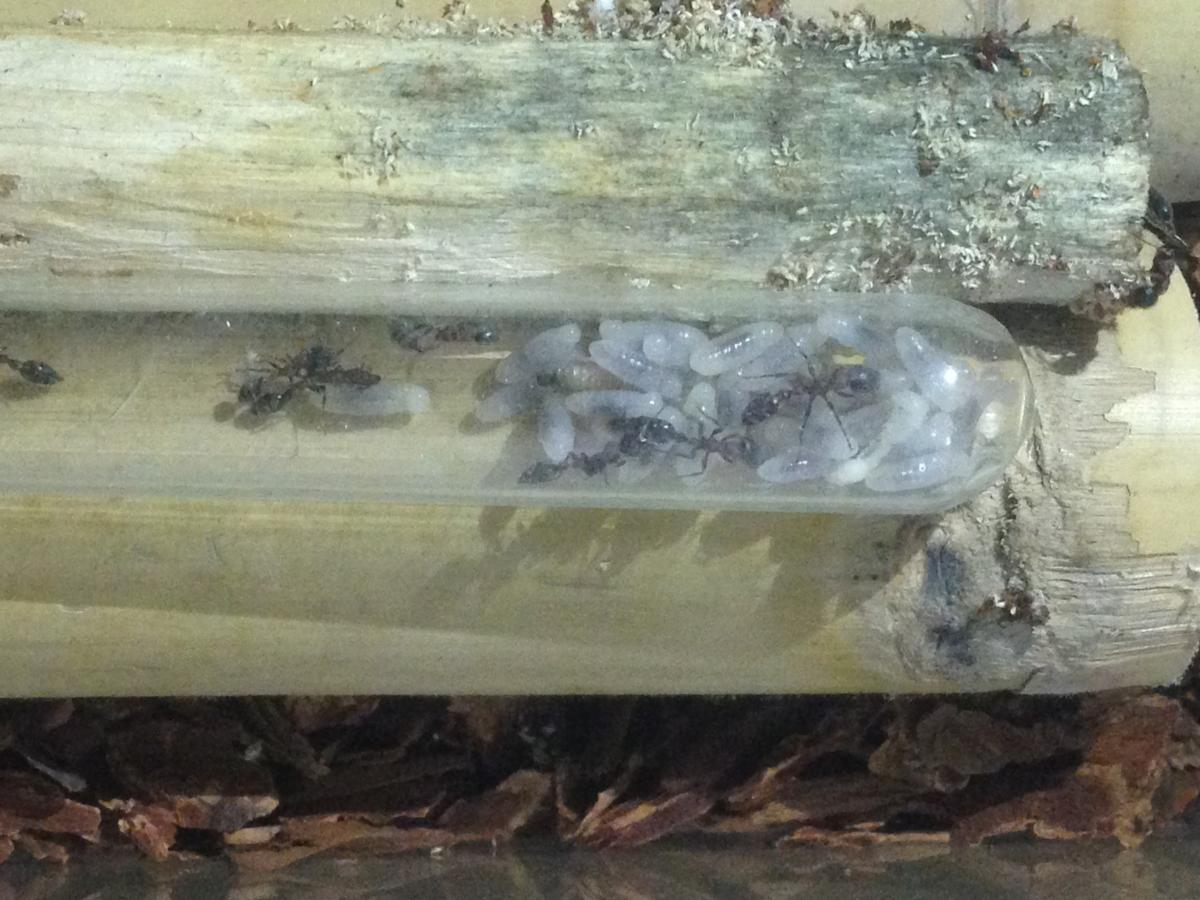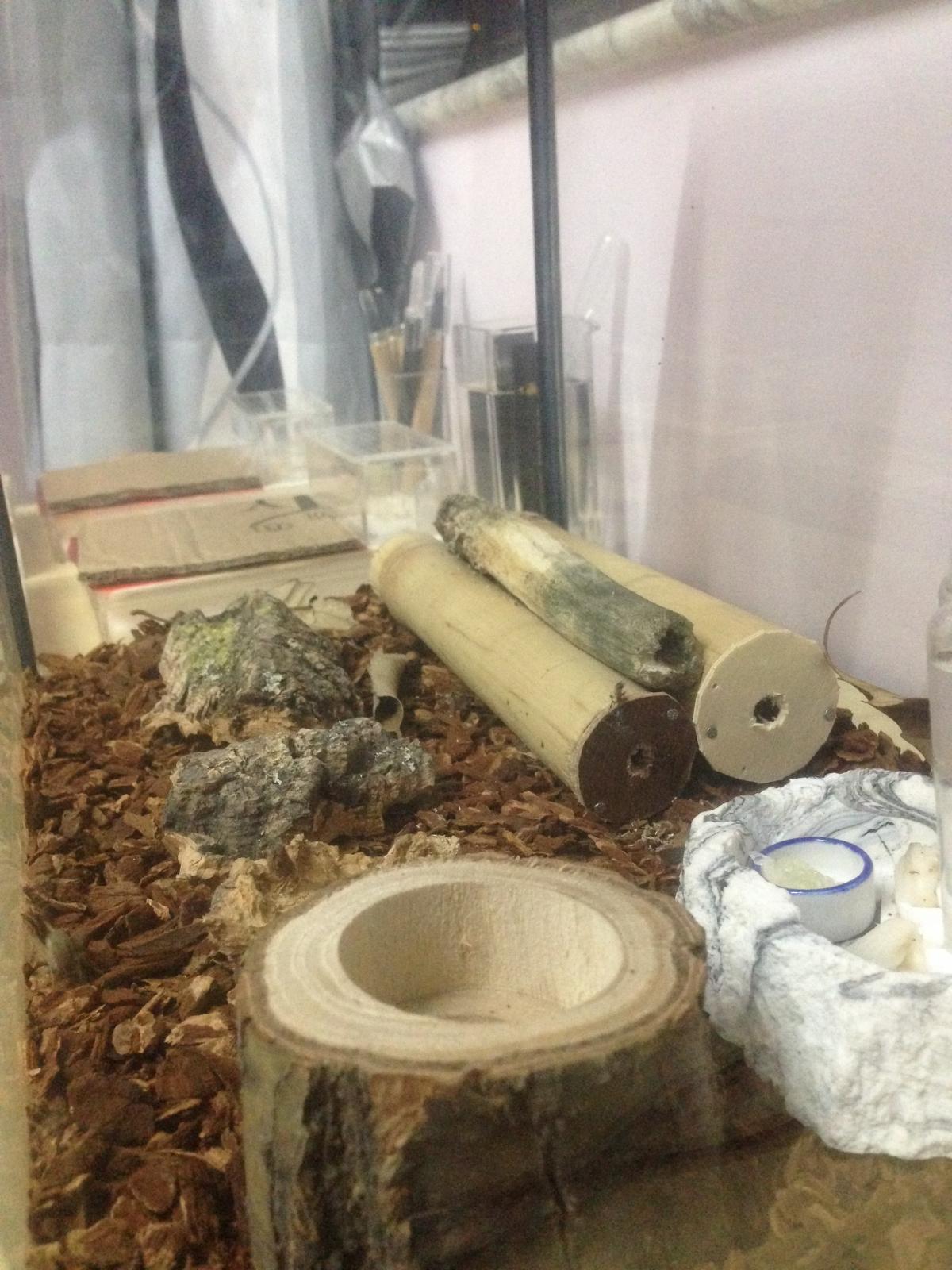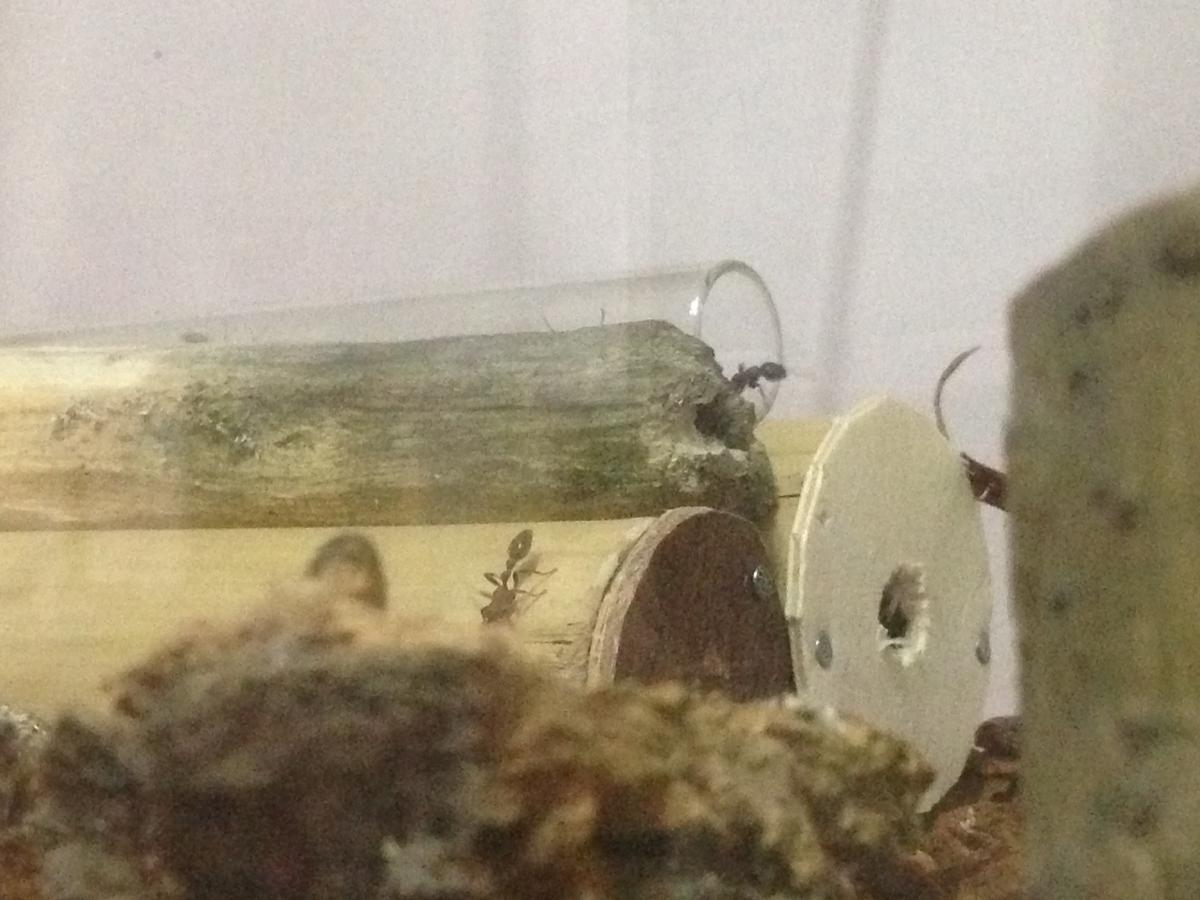This is my first experience with this species.
References:
0 - https://en.wikipedia...iki/Tetraponera
1 - http://www.antwiki.o...onera_rufonigra
2 - http://www.alexander...ra/Tetraponera/
3 - http://www.myantshop...Tetraponera.htm
4 - http://www.antstore....-rufonigra.html
5 - https://www.antstore...66.html#p145716
6 - https://www.youtube....h?v=cd3xIlGP9Uk
7 - https://www.youtube....h?v=xKmrsav_pNk
Experience:
I always wanted to have this species. It is a very good looking species.
They came inside a test tube. Very jammed (i don't know how the supplier did that). And almost escaping!!
I had my nest well prepared this time. I had a hollow branch all the way. I had dry wood chips for soil and dried oak leaves.
I also placed a water tower, and a small test tube with cotton and water just in case. Later I added sugar and water.
Zero chance with this species. As soon as I tried to open the cotton cover, they all rushed outside and tried to "conquer" the space and kill any possible threats. I had to close the cover and wait for them to calm down.
Queen in the process of moving.
After initial scouting, they started to move the whole colony into the hollow branch.
What ended up happening was that the colony was too big for the hollow branch, and through out the days, they relocated the larvae to the original test tube and the puppae to the hollow branch. This species also does not cocoon.
I underestimated the size vs activity level of the colony since they were completely packed inside the test tube.
They are clearly overwhelming the small formicarium. And so based on some references photos, I have made the following nest.
Medium tank with compost soil and dry wood chips, two bamboo sections with a softwood cover lid on the end, and with a small opening.
I am waiting for an acrylic custom made cover for this tank to move the colony in.
Behaviour:
This species does not react actively to small movements of the nest. But will over react to shadows movements.
They have good vision, and if they notice movement they will change to alert state, where they will start scouting the air and surrounding for intruders.
Normally they are occupied on their daily activities, brood caring, scouting and foraging, and they do it in a normal pace, but if agitated they will speed up and rush everywhere. Its not a time when you want to attend them.
They are super aggressive, they will actively hunt down all moving prey, and handle it in 10 minutes. Where there won't be anymore traces of the insect.
Because their sting is said to be extremely painful, extra care is needed towards escape prevention. You don't want to go back home and find this species roaming around!
They have very strong mandibles, soft wood, soft plastic, cotton, etc can and will be eaten/destroyed. One worker chew a plastic cover easily. I wouldn't go for plaster as well.
I advise using acrylic or glass for containing purposes.
When I transfer them into the new nest I will post more photos.
Edited by RapaNui, November 9 2015 - 7:12 PM.




